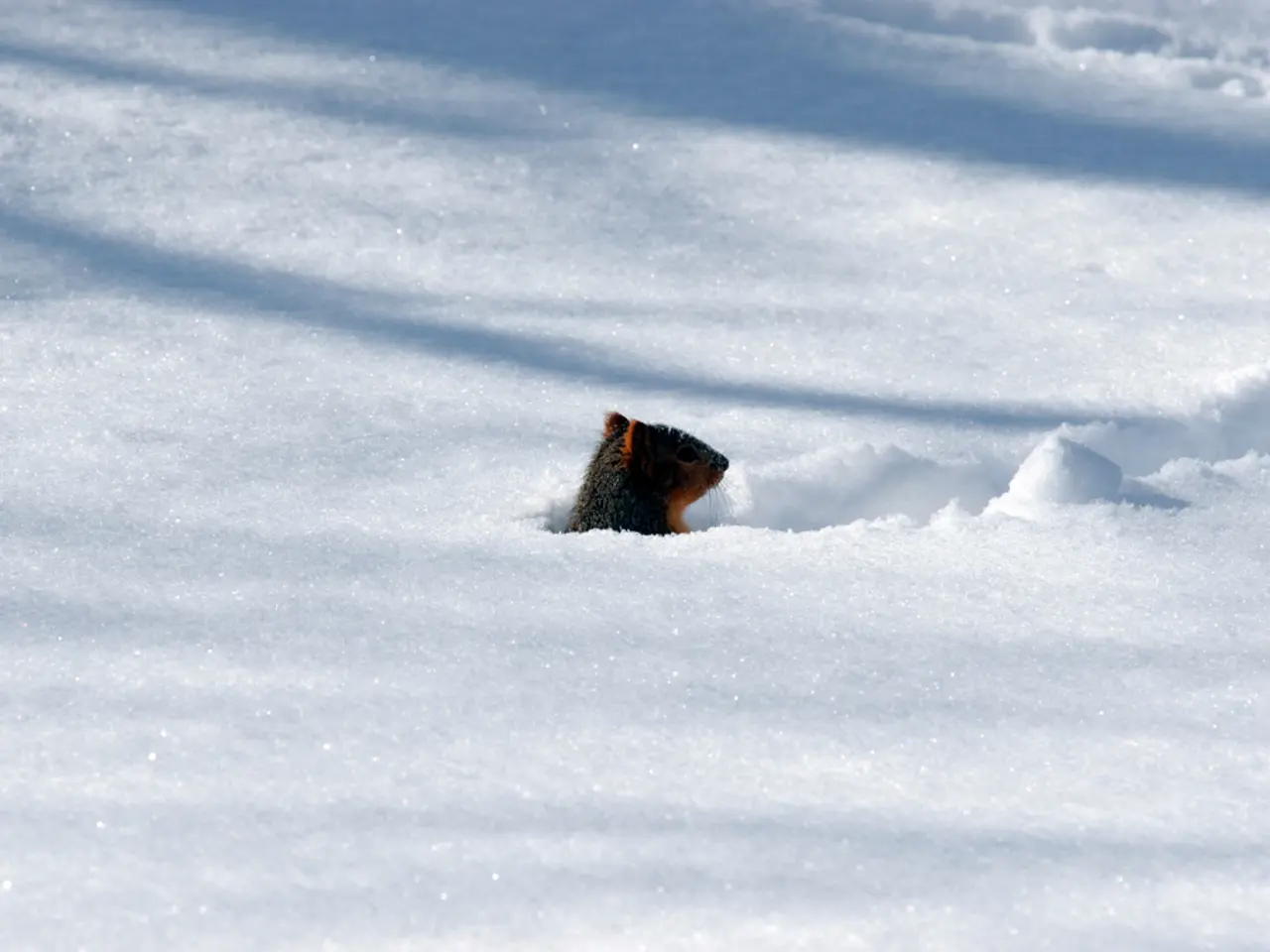Green and Sustainable Winters: Ecologically Conscious Habits for the Chilly Months
Reducing Your Environmental Footprint During Winter: A Guide to Sustainable Practices
As the cold weather sets in, it's important to consider the environmental impact of our daily routines. Here are some practical and sustainable practices to help you keep warm and comfortable while lowering your carbon footprint this winter.
Choosing Sustainable Winter Clothing
Opt for clothing made from eco-friendly materials like organic cotton, recycled polyester, and TENCEL™ Lyocell. These materials reduce water and chemical use. Look for certifications such as GOTS or RDS, and prefer durable, timeless coats to minimize waste. Support brands with circular fashion practices or buy pre-loved garments to close the lifecycle loop.
Optimizing Home Heating and Energy Use
Set thermostats to around 19°C (67°F), wear warm clothing indoors to reduce heating reliance, and turn off heating when not home. Replace inefficient heaters with high-performance heat pumps, and insulate by closing curtains at night.
Energy-Efficient Appliances and Lighting
Use energy-efficient appliances and lighting, such as LED bulbs, and unplug unused devices. Wash clothes in cold water and air dry to save electricity. Adjust fridge and freezer temperatures optimally and defrost freezers regularly to maintain efficiency.
Supporting Renewable Energy Usage
Switch to green energy providers or install solar panels if possible.
Sustainable Winter Recreation
Choose eco-certified ski resorts that use renewable energy for snowmaking and follow strict water and environmental guidelines, which minimize impacts on local ecosystems.
Eco-Friendly Winter Outdoor Maintenance
Use safer deicing materials and care for urban trees, which supports resilient landscapes and reduces environmental harm.
Minimizing Waste During Winter Months
Recycle, compost, and reduce single-use or disposable products to limit landfill contributions. Compost food scraps during winter, especially around holidays, to create nutrient-rich soil.
Energy Conservation
Layering clothing can help maintain warmth without relying on bulky outerwear. Wearing layers and using blankets instead of increasing the thermostat temperature can conserve energy. Sealing drafts around windows and doors can significantly reduce heat loss.
Sustainable Winter Sports Facilities
Choose eco-friendly winter sports facilities that use renewable energy or support eco-friendly initiatives to make winter sports more sustainable.
Eco-Friendly Gift Wrapping
Reduce waste by using fabric gift bags, scarves, old newspaper, or eco-friendly wrapping paper for gift wrapping.
Energy-Efficient Heating
Heat pumps transfer heat from the outside air into homes, making them more energy-efficient. Programmable thermostats or smart heating systems can help adjust temperatures and save energy.
Sustainable Winter Shopping
Focus on purchasing quality, durable items that will last through the season and beyond to help reduce waste. Properly caring for clothing can extend its lifespan.
Supporting Sustainable Brands
Support sustainable brands that prioritize sustainable production processes, use organic or recycled materials, and ensure fair working conditions to help create a market for more eco-conscious products.
Solar Heating During Winter
Solar heating can still be effective during winter months with proper installation and maintenance.
Winterizing Gardens
Winterize gardens with organic mulch, covering plants with frost cloths, and ensuring healthy soil through composting to reduce the need for excessive watering or synthetic fertilizers.
Reducing Travel During Winter Events
Opting for virtual gatherings instead of unnecessary travel can help reduce carbon footprint during winter events. Space heaters, when used safely and efficiently, can warm small areas. Carpooling or taking public transportation during winter travel can reduce the number of cars on the road and improve energy efficiency.
By implementing these practices, you can enjoy a warm, comfortable winter while making a positive impact on the environment.
- In your winter wardrobe, consider choosing vintage clothing or those made from eco-friendly materials like organic cotton, recycled polyester, and TENCEL™ Lyocell to reduce the environmental impact.
- To minimize waste during the winter months, try composting food scraps around holidays, using reusable bags, and reducing the use of single-use or disposable products.
- For a cozy winter night, layer clothing and use blankets instead of increasing the thermostat temperature to conserve energy.
- When shopping for winter sports equipment, opt for eco-friendly gear from brands that prioritize sustainable production processes and use organic or recycled materials.




